Cygnus Constellation Mythology
Cygnus is one of the most well-known and recognisable constellations in the night sky, it is also known as ‘The Swan’ or ‘The Northern Cross’. But what is the story behind the Cygnus constellation?
In this post, I will delve into the history of the Cygnus constellation from its earliest origins and the varied mythology that surrounds it, through to its modern acceptance as an officially recognised constellation in our night sky.
If you want to find out how and when to find the Cygnus constellation in the night sky, plus learn about the stars, nebulae and deep sky objects that it contains please read my related post about this fascinating constellation here.
But if you are here for the backstory please read on…
Cygnus Constellation History
The Constellation Cygnus has been known since ancient times, perhaps as far back as the ancient Egyptians, whose civilisation spanned thousands of years from c3000BC to about c300BC.
In Ancient Egypt Cygnus may have been represented by the Ibis or a goose, which is a sacred bird associated with the deity Djehuty, often referred to as Thoth in Greek.
Some texts claim that the Egyptian interpretation of the constellations are, in many instances, very close matches both astronomically and symbolically to the modern representations, giving weight to the idea that some of the well-known constellations may have preceded the ancient Greeks.
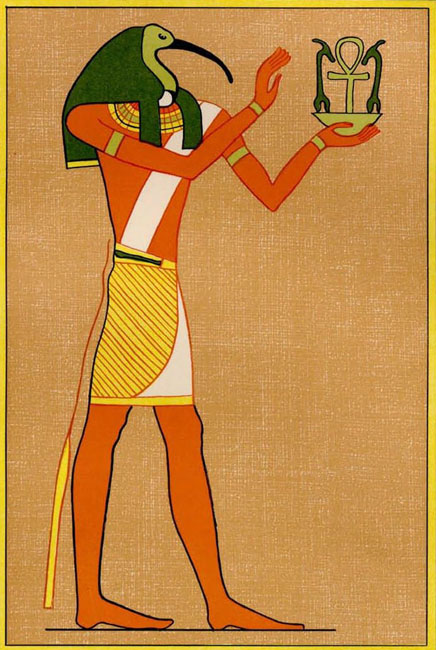
Djehuty the ancient Egyptian Deity. God of wisdom, hieroglyphs (writing), science, art and judgment.
By accounting for the star’s proper motion the positions of the stars as they appeared in Egypt thousands of years ago can be simulated. The positions of these stars can be compared against the few ancient texts and references that have been discovered, like those found on the inside of sarcophagus lids, to see if any direct comparisons can be made.
The Ibis may correspond to the same stars and positions in the night sky as the Cygnus constellation. It also matches the iconography of the Ibis bird with that of a Swan.
However, it should be strongly noted that reliable astronomical data from this period is scarce and there is little consensus on the identity of these ancient Egyptian constellations.
There are also other clues that the stars in Cygnus were associated with a different constellation before the stars were embodied as a Swan by the Ancient Greeks.
In astronomy, many of the constellations bear Latin names assigned by the ancient Greeks, but the stars have typically kept their Ancient Arabic names.
In Arabic, the name for the star Deneb, which is Cygnus’ brightest star, derives from the word ‘tail’ or more specifically “Dhanab al-Dajājah”, or “Tail of the Hen”. Was Cygnus a Hen before being depicted as a Swan?
It wasn’t until the ancient Greek’s (c800BC to 146BC) depiction of the stars as a Swan that it began to assume its modern representation. Cygnus is Latin for Swan and the constellation’s outline does bear a strong resemblance to a swan in flight, with its wings opened out and neck outstretched in front.
When coupled with the rich Greek mythology which contains several famous characters that had the name Cygnus it is easy to see why it has stuck around ever since.
Cygnus was also listed in Ptolemy’s Almagest, written in about 150 AD, the Almagest, sometimes referred to as ‘The Greatest Treatise‘ contains some of the most comprehensive historical records about astronomy that we know of.
The Almagest contains 48 constellations and is the basis of the modern constellations that we know today. The Almagest didn’t contain any line drawings of the constellations, only tabulated star data including a set of coordinates and each star’s stellar magnitude.
However, it was possible to use this data and the descriptions given in the Almagest to accurately work out the correct constellation outlines.
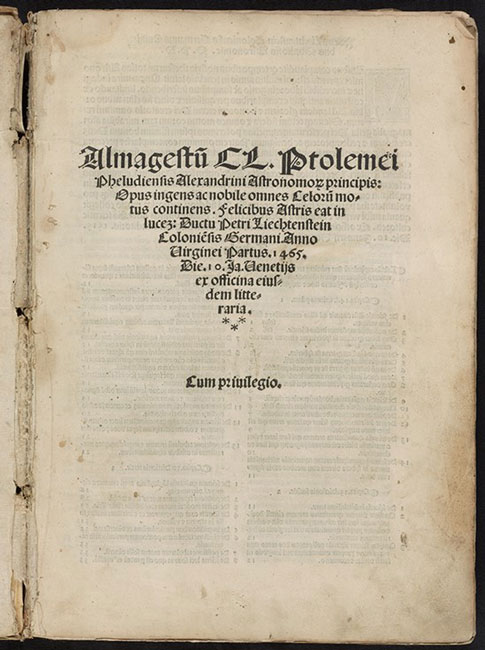
This image of the Almagest is from a rare copy created by the German printer Petri Liechtenstein in 1515.
Cygnus was officially recognised by the International Astronomical Union (IAU) in 1922, at the very first IAU General Assembly held in Rome. During the assembly, the IAU’s commission agreed on a list of 88 constellations that cover the entire sky.
Cygnus was now one of the 88 officially recognised constellations in the night sky. The constellation’s boundary and the stars that are contained within it have remained the same ever since.
Cygnus in Greek Mythology
There are several characters from Greek mythology that bore the name Cygnus. Here are three versions of the origin of Cygnus from Greek mythology. All are quite different but each one ultimately ends with a transformation into a swan before ascending into the heavens as the constellation.
Cygnus the Warrior and the Trojan War
Cygnus was the son of Apollo, the God of healing, archery, music, arts, the Sun and more. As a child, Cygnus showed great promise as a warrior, and he was trained by his father in the art of combat.
During the Trojan War, Cygnus fought for the Trojans and was known for his skill in battle. Eventually, Cygnus was faced against the formidable Achilles and a long battle ensued. In the end, however, Achilles emerged victorious, and Cygnus was killed.
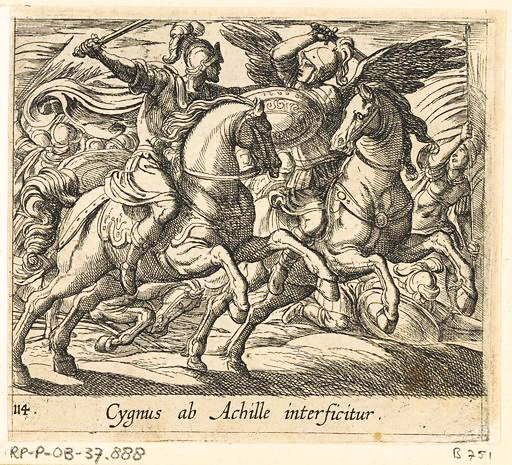
Achilles fights with Cygnus in the Trojan War. Public Domain Image
As a tribute to his son, Apollo transformed Cygnus into a swan and placed him among the stars as a constellation. The constellation Cygnus is said to represent Cygnus’s bravery and his devotion to his father, Apollo.
Zeus Transformed into a Swan
In another version of the myth, Zeus, Ruler of the Gods and God of the sky and thunder, fell in love with a mortal woman named Leda, who was already married to the King of Sparta.
In order to seduce Leda Zeus transformed himself into a swan. Leda was initially uneasy with Zeus’s advances as a Swan, but Zeus was ultimately able to seduce her and she later gave birth to four children: two of them were the Gemini twins: Castor and Pollux, while the other two were Helen of Troy and Clytemnestra.
After his transformation, the swan was said to have flown into the sky and become the constellation Cygnus.
Cygnus the Lover of Phaethon
In another version of the myth, Cygnus was the son of the Greek God Sthenelus, who himself was the son of Perseus and Andromeda.
In this version of the myth, Cygnus was supposedly the lover of Phaethon (Son of Helios the Sun God). Phaethon asked to drive his father’s chariot of the Sun but was unable to control the horses and the chariot, causing chaos on Earth.
Zeus intervened and struck Phaethon with a thunderbolt, this strike caused Phaethon to fall from the sky and fall to his death into the river Eridanus.
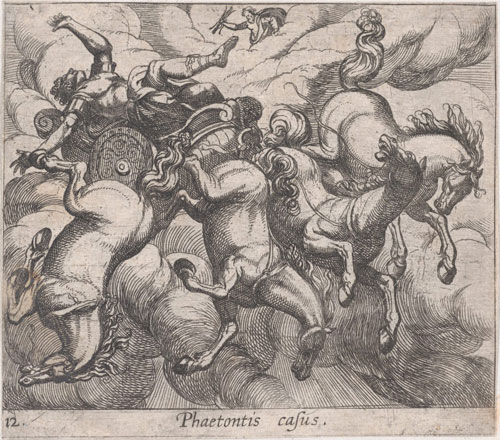
The Fall of Phaethon. Public Domain Media
Cygnus was grief-stricken by Phaethon’s death and dived into the river Eridanus many times to collect his bones to give him a proper burial. It is said that Cygnus mourned Phaethon’s death well into his old age.
Moved by Cygnus’ devotion the gods transformed Cygnus into a Swan to relieve his suffering,
Final Thoughts
Cygnus is located in the rich star fields of the Milky Way, it has a distinctive shape and contains several bright stars. It is no wonder that there have been several different interpretations and embodiments of the stars in and around Cygnus over time.
It is difficult to pin down the exact history and evolution of Cygnus, particularly prior to the ancient Greeks, but it is surrounded by enough intrigue, myth and beauty that has clearly captivated peoples across time and cultures.
As we are able to probe deeper and deeper into this constellation with modern equipment and techniques I am sure its beauty and mystery will continue to captivate us all for centuries to come.
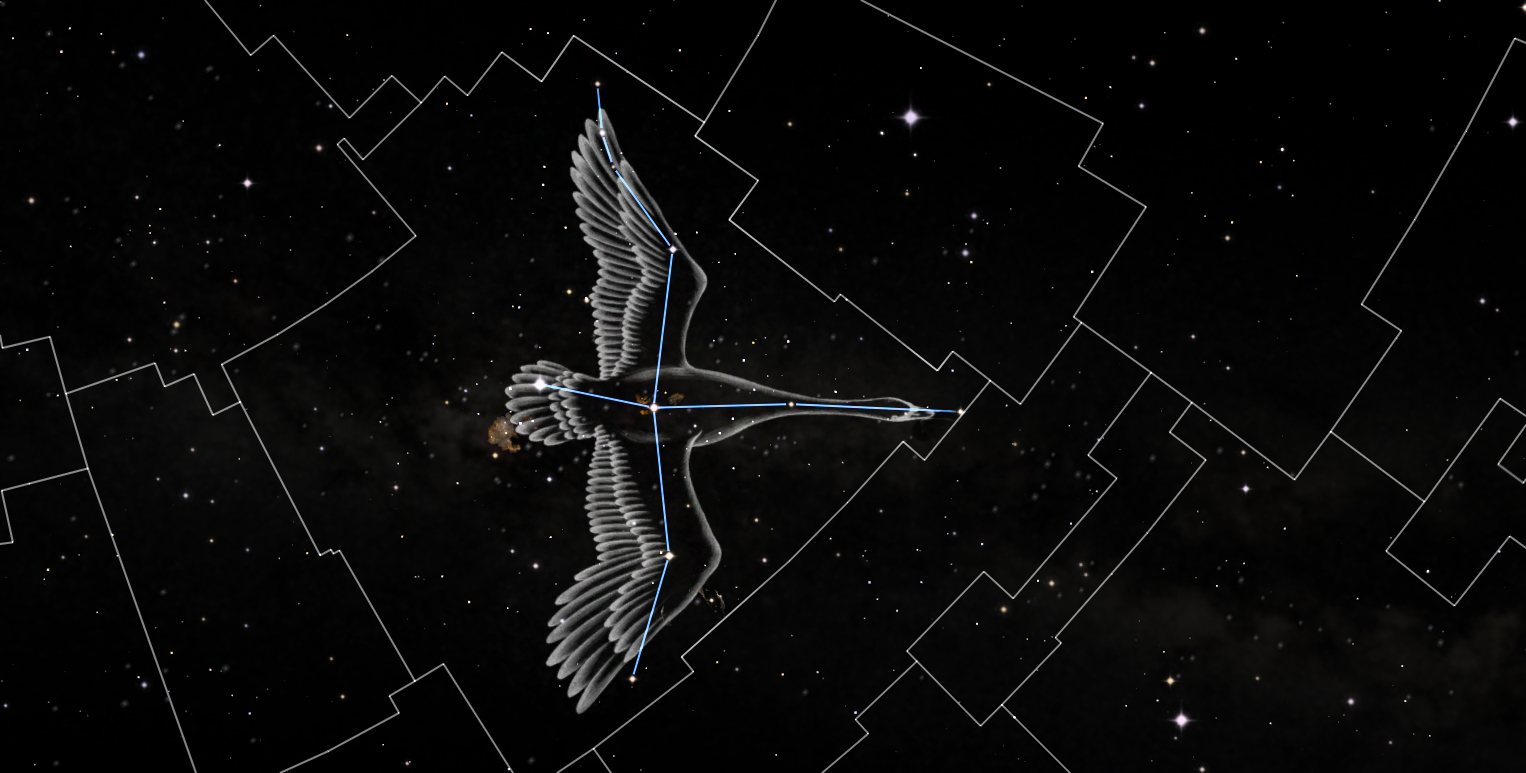
0 Comments